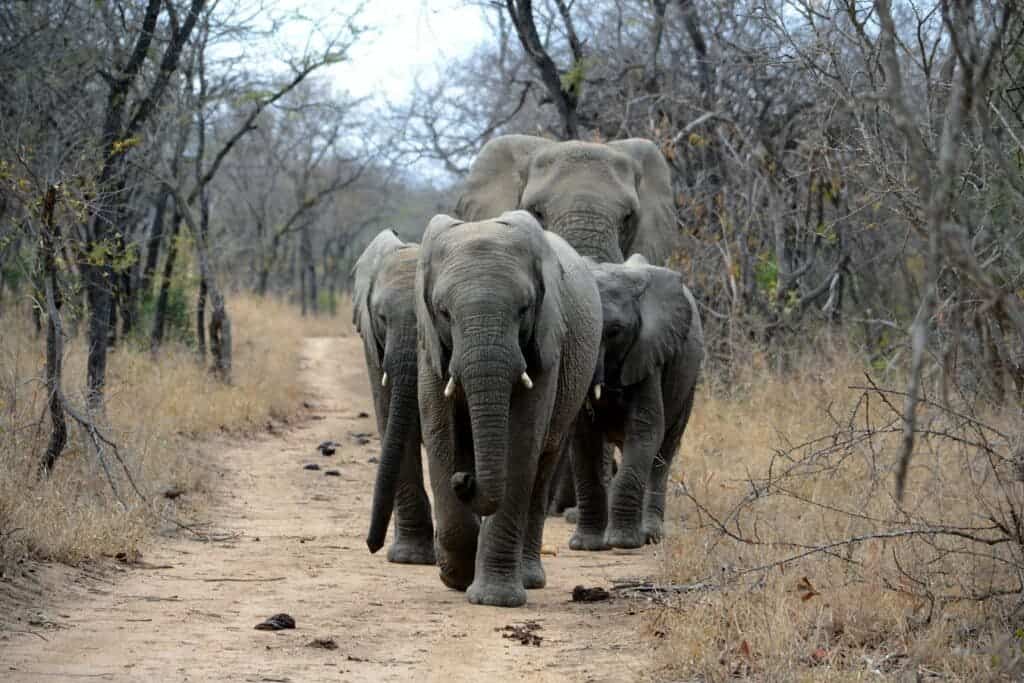Every time an earthquake takes place, it sends vibrations throughout the Earth’s crust. It’s not just earthquakes, either; human activity also produces detectable vibrations, and so does elephant activity.

African elephants are very social animals. They communicate with each other using powerful, low-frequency vocalizations called rumbles. These rumbles are so strong that they can produce resonance in the ground, triggering seismic waves that travel farther through the land than the air.
Humans can’t really hear rumbles, since our ears are so puny compared to those of the elephants, but we’ve detected them before using specialized equipment. Other elephants can pick up these vibrations from up to 6 km away, using special organs in their sensitive feet.
Elephants are remarkably adept at communicating through these rumbles, whether it’s locating friends or detecting calls from friends or rivals. They can also detect other elephants running, and infer that something dangerous is nearby.
Researchers have considered using these rumbles to monitor elephants in the past, but the problem is that conventional equipment that does this is expensive. Luckily, this is where a particular Raspberry enters the scene.
Raspberry, meet elephants
Raspberry Pi is essentially a cheap, miniature computer that can be used in all sorts of scientific and industrial projects. A seismograph built on the Raspberry Pi (called Raspberry Shake) has already been used for a multitude of studies and now, a group of researchers including Oliver Lamb, a geophysicist at the University of North Carolina at Chapel Hill, wanted to see if the Shake could be tweaked and used to study elephants.
Compared to equipment that typically costs tens of thousands of dollars, the whole setup Lamb and colleagues used set them back less than $1000. The system basically consists of a geophone (an “earth microphone” that converts ground vibrations into measurable electronic systems), an acoustic microphone, and a miniature computer to operate everything. Five such devices were deployed in an attempt to study elephant reunions, where elephants stomp the ground noisily after being separated for a while.
It worked, but not perfectly. The setup was perfectly capable of detecting telltale low-frequency vocalizations, but unfortunately, only at a range of 100 meters.
Researchers are confident that the range can be improved significantly, but are not sure just by how much. At any rate, it seems that the reliable range will be somewhere in the hundreds of meters, which means the devices could only be used locally.
Still, as Lamb presented the results at EGU2020 Online, he expressed confidence that the devices could be useful in areas that elephants are known to frequent and congregate, such as watering holes. These are also areas that poachers sometimes use to kill elephants, so that could be a potential application, to develop a sort of alarm system.
While the practicalities of such a system are still yet to be developed, it’s an interesting approach that warrants further attention and could help detect poachers and protect vulnerable elephant populations.









